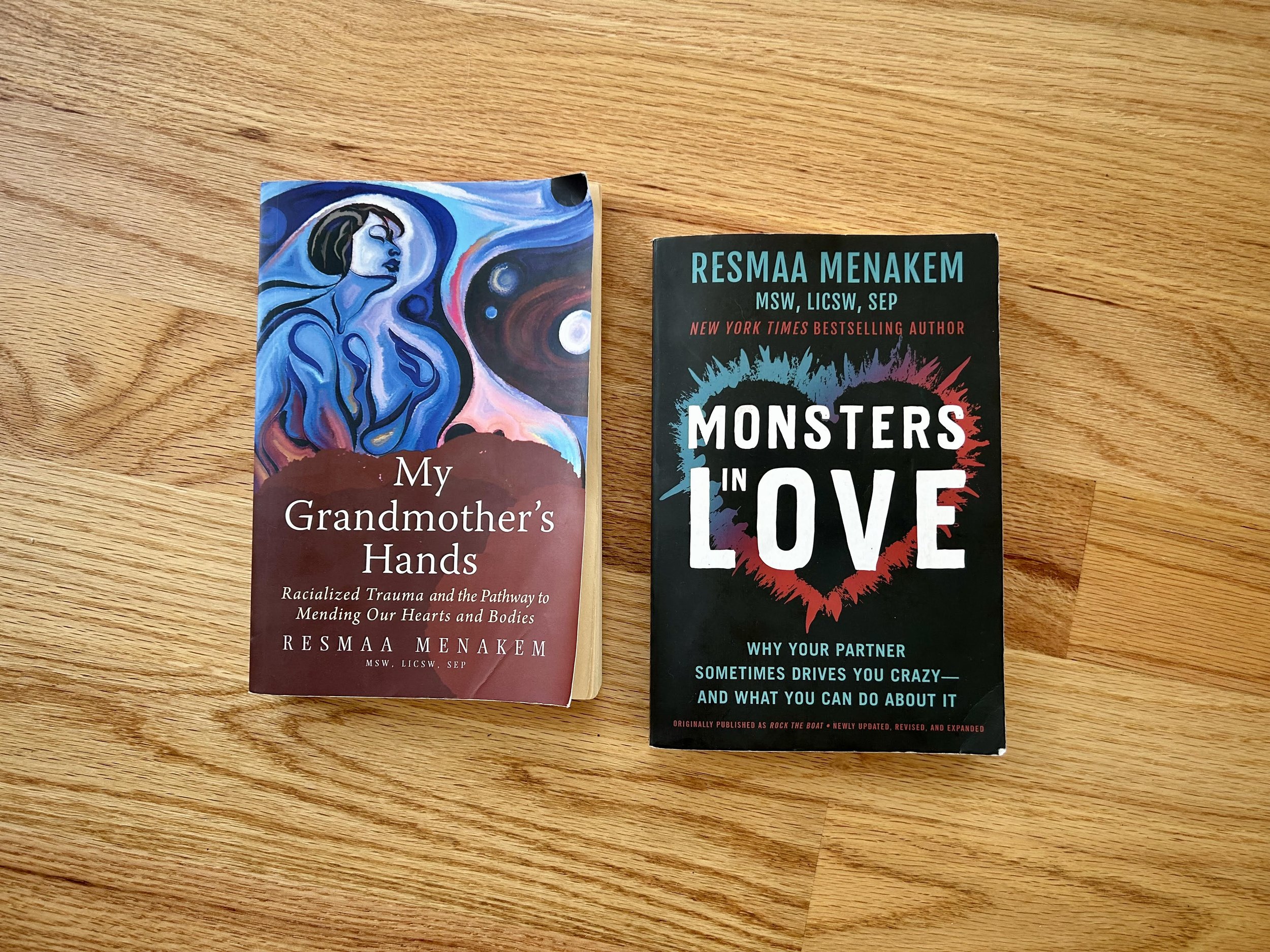How does Chi for Two® align with the work of Resmaa Menakem’s Cultural Somatics?
Written by Dee Wagner - with Fred Shelton, Chi for Two Embodiment Coach and Director of Diversity Marketing
Resmaa Menakem is the author of My Grandmother’s Hands: Racialized Trauma and the Pathway to Mending Our Hearts and Bodies as well as Monsters in Love: Why Your Lover Sometimes Drives You Crazy—and What You Can Do About It. The best way to describe how Chi for Two is like the work of Menakem is to explain some ways that Chi for Two deepens Menakem’s work. Chi for Two’s trauma healing method includes relational and developmental practices that help to support Menakem’s emphasis on the need to heal multi-generational patterns somatically.
Menakem combines current science related to trauma with a depth and breadth of understanding of cultural experiences that must be absorbed to be fully appreciated. In his many years of providing family therapy for the military, his understanding of the nuanced relational dance that happens between romantic partners brings crucial new awareness to the world. Menekam talks about the importance of both partners becoming vulnerable and recognizing each other's vulnerability as part of the healing/deepening dance. His cultural somatics work defines and ties together the experiences of diverse populations.
Menakem calls the vagus nerve the soul nerve. The Chi for Two take on polyvagal theory adds clarity to how the ventral and dorsal rhythmic braking and releasing of the vagus facilitates digesting and breathing. Sluggish braking and releasing creates trauma patterning—inhibition of movement expression in the core. Trauma patterning causes us to lose our “fire in the belly.” Multi-generational trauma healing creates space in the belly for breathing. The word “spirit” comes from the Latin word “spiritus,” which means breath.
Menakem warns couples, “You are not each other’s baby.” Chi for Two has 5 practices for romantic partners that help people notice when their vulnerability is actually “baby stuff”. When lovers recognize the awaking of “baby stuff,” there are 35 partner practices that clients can do with their Chi for Two Embodiment Coach for a symbolic redo of the unfinished infant/parent dance, healing multi-generational trauma.
In a Racialized Trauma Home Study Course, Menakem offers help to people who feel pain because they are descendants of a dominant culture. When trauma patterning awakens, getting rid of that pain as fast as possible can feel desirable. However—as Menakem says—it is important to hold that pain in order to truly process through it. One of the Four Emanations of Embodiment identified in Chi for Two is called Handling. The Handling practices allow us to Push into a Chi for Two Embodiment Coach to process pain and to develop mindfulness of the multi-generational patterns that lead to some people dominating and marginalizing others.
Menakem speaks of the need to “grow up.” Chi for Two teaches us how.
Along with:
knowledge of our polyvagal anatomy provided by the work of Stephen Porges, creator of the polyvagal theory,
understanding of trauma patterning from Peter Levine, creator of the trauma healing method Somatic Experiencing,
vision of Menakem, who applies the knowledge of trauma patterning in the body to cultural systems
…Chi for Two synthesizes:
awareness of infant development from Bonnie Bainbridge Cohen, creator of Body-Mind Centering,
recognition of infant development rhythms from Judith Kestenberg and colleagues, creators of the Kestenberg Movement Profile,
expertise in the therapeutic dance from Marian Chace, Mary Whitehouse, and Janet Adler, originators of dance/movement therapy


